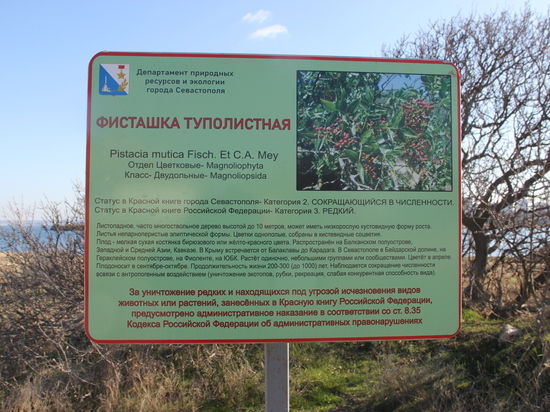The western cape of Kruglaya Bay is an object of interest both from the point of view of cultural heritage and from the point of view of biological diversity.
The suburb of ancient Chersonese – Hora was divided by roads into rectangular sections of almost regular geometric shape. The size of these plots varied from 17 to 25 hectares, and within these plots were divided into estates with an area of approximately 4.4 hectares. Hora turned out to be a system that unites places of residence and agricultural production. The stone chosen during the cultivation of the site was used to build a fence and a tower house. Each housing estate was a miniature fortress and could withstand raids from disparate bands of steppe dwellers. The second floor of the house is residential, the first is economic. Here they grew grapes and olives, raised cattle and poultry, and stored wheat, barley, and millet grown on arable land.
On the site of the Chora of Chersonesos, among the ruins, an unusual representative of the flora now dominates – the pistachio tupolis, a relic of the Tertiary forests, which came to us from the Cretaceous for 66 million years. When the Greeks decided to settle on the shores of modern Crimea, pistachio already dominated all coastal territories here. It is resistant to drought, salty coastal waters, frosts of 20 degrees and heat of 40. Its growth is extremely slow: it reaches one meter in height in 20 years. But he lives up to 1000 years, the diameter of the butt at the butt is more than one meter, and the height of the crown can reach 12 meters. The plant is dioecious. The fruits are dry drupes, inedible for humans, but tasty for birds and animals. Other names for the tree are kevovoe, turpentine. When the bark is damaged, it releases resinous resin (raw material for incense). The medicinal plant is not only resin, but also foliage, from which infusions and decoctions are prepared. The root system with a diameter of 60 meters and a multi-tiered depth of 15 meters allows the tree to survive drought and strengthen the slopes of landslides.
The hypothesis that the Greeks brought pistachio tuliposus plants to Crimea does not stand up to scrutiny. A real pistachio (fruiting body with edible nuts) would be easier to bring from the Greek coasts. You can graft shoots of a real one on a dull one, but this is extremely problematic – the dull resin rejects most of the interference in its “personal life”. And seedlings of real pistachio in the Crimea, although taking root, are very demanding on irrigation.
For many centuries the pistachio has been subjected to extermination for the sake of beautiful and strong wood, the extraction of resin, the annealing of coals and the heating of dwellings. Today this plant is included in the Red Book of Russia and is under state protection.


